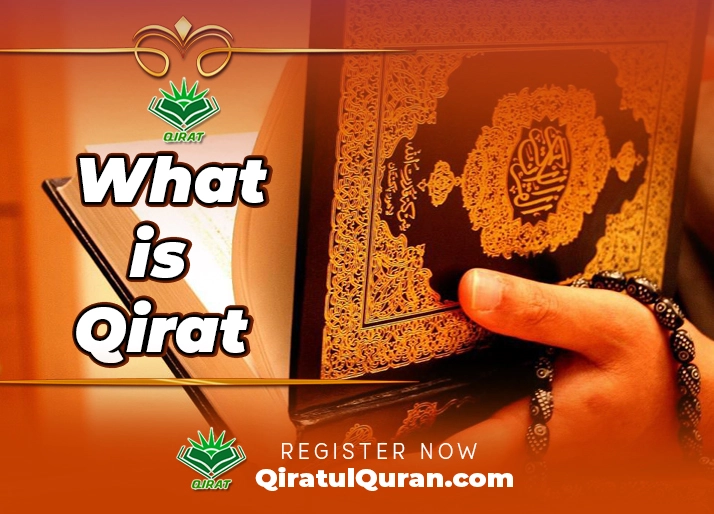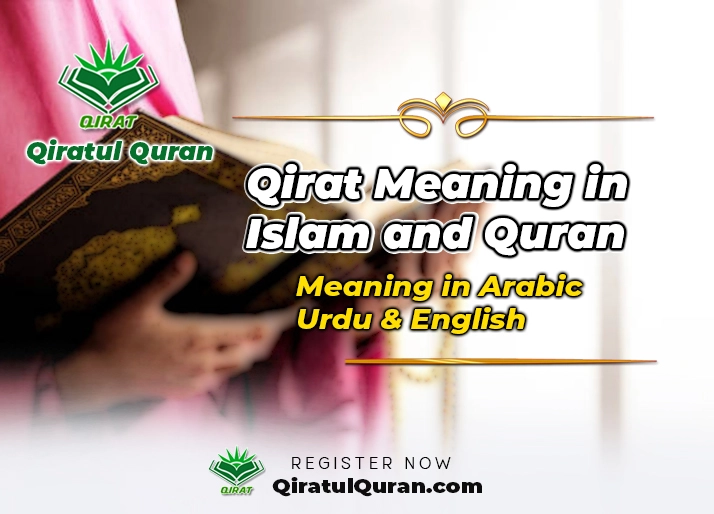
What is Qirat?
Qirat (Arabic: قراءة, Qirā’āt) refers to the method of recitation of the Holy Quran. It encompasses the different styles and modes of pronunciation used when reciting the verses of the Quran. There are multiple accepted methods of reciting the Quran, known as the Seven Readings (al-Qira’at al-Sab’), each traced back to the Prophet Muhammad صلى الله عليه وسلم through one of his companions.
Qiratul Quran will guide you the word “qirat” literally means “recitation” or “reading”. When we talk about the Qirat of the Quran, it refers to the manifold ways the verses of the Holy Book are vocalized.
Why are there Different Readings of the Quran?
The multiple modes of Quranic recitation were incorporated to emphasize the message of the Scripture in different linguistic styles. They bring out various meaning nuances in the Arabic text while still preserving the overall guidance and wisdom.
This diversity also makes memorization and comprehension easier for speakers of different Arabic dialects. The style of recitation one learns and adopts often depends on the regional customs of where one studies the Quran.
The readings do not differ in meaning but may vary slightly in wording and pronunciation. The incorporation of seven authorized recitations was vital early in Islamic history to establish the accuracy of scripture memorization and safeguard the revelation.
The Seven Qirat (Readings)
The Seven Qirat, or canonical methods of reciting the Quran, have been passed down in documented chains of transmission (isnads) going back several generations to the Prophet Muhammad صلى الله عليه وسلم. Each of them is named after the sahabah (companion of the Prophet صلى الله عليه وسلم) from whom it originates.
1. Qirat of Nafi bin Al-Madani
The reading of Nāfi‘ Al-Madaniyy has two transmission chains:
Qalun
Through Warsh bin Qalun Al-Madaniyy
Qabus
Through Qabus bin Al-Madaniyy
Nafi learned his recital style directly from multiple sahabahs in Madinah which is why it was named “Al-Madaniyy”. His style is one of the most commonly used readings across Africa.
2. Qirat of Ibn Kathir al-Makki
Ibn Kathīr Al-Makkī learned the method of reciting the Quran from Mujahid bin Jabr, who learned it through various sahabah. His recitation style is prevalent in regions of Arabia and areas of northwest Africa.
3. Qirat of Abu ‘Amr al-Basri
The reading of Abū ‘Amr Zabīd bin ‘Alā As-Shaibānī Al-Basrī has two riwayat (transmission paths):
Ad-Duri
Through Isma‘īl bin ‘Abd Ar-Rahmān As-Suddiyy Ad-Duriyy
As-Suri
Through Abu Shu‘ayb Salīh bin Ziyād As-Sūriyy
Abu ‘Amr’s style spread through students in Basra and the southern Arabian peninsula but is less common nowadays.
4. Qirat of Ibn Amir ad-Dimashqi
Ibn ‘Āmir bin Yazīd (Al-Yahsubiyy) learned the recitation of the Quran from companion Ubay bin Ka‘b. His method is transmitted through:
Hisham
Through Hishām bin ‘Ammār Ad-Dimashqiyy
Ibn Amir’s style gained prevalence in Damascus and surrounding areas.
5. Qirat of Asim al-Kufi
The reading of ‘Āsim bin Abī An-Nujūd Al-Asadiyy Al-Kūfiyy has two riwayat:
Hafs
Through Hafs bin Sulaymān Al-Asadīyy Al-Kūfiyy
Shu’bah
Through Shu‘bah bin ‘Ayyāsh Al-Asadiyy Al-Kūfiyy
Asim learned the method of ‘Abdullah bin ‘Abbas, the cousin of Prophet صلى الله عليه وسلم. His style later spread through Iran, India, and parts of Southeast Asia.
6. Qirat of Hamzah al-Kufi
Hamzah Az-Zayyāt Al-Kūfiyy learned from multiple sahabah, including ‘Ali ibn Abi Talib. His recitation style is transmitted through Khalaf bin Hisham Al-Kūfiyy.
Hamzah’s way of reading aloud the Quran gained prevalence across modern-day Turkey.
7. Qirat of Al-Kisai
The method of reciting the Quran as taught by ‘Aliyy bin Hamzah bin ‘Abdullah Ar-Raba‘iyy Al-Kisāiyy is prevalent in parts of North Africa, Spain, and West Africa.
He learned the style of recitation mainly from Muhammad bin ‘Abdirahman bin Abī Laylā Al-Qurashiyy Az-Zuhriyy.
What is Meant by the Qirat of the Quran?
The existence of multiple readings was vital for the preservation of the Quran and verification of memorized verses during the time of Caliph Uthman bin Affan R.A when the Scripture was compiled into an official Mushaf (written copy).
Differences in the Readings
The Seven Readings of Quran differ slightly in wording, pronunciation, and dialect but share the overall essential meaning. For example, some readings pronounce a certain letter differently and replace a vowel marking with another while keeping the overall guidance the same.
Some examples of differences include:
- Pronouncing a letter with a thin or thick accent.
- Pronouncing a letter as fully voiced or unvoiced.
- Elongation or shortening of vowels.
- Replacement of a vowel with another acceptable alternative.
- Occasional word variation (e.g. using the synonym “jasadahā” instead of “juththatahā” in 4:93, both meaning “her body”).
Think of it as nearly similar English statements that vary slightly like “He did well on the test” versus “He performed well on the exam.”
Purpose Behind Multiple Accepted Readings
Every mode of recitation among the Seven is equally authentic, revealed from the Divine as a facilitation for people. Reasons for multiple Qirat include:
Linguistic Flexibility
- To accommodate different Arabic dialects and ease memorization.
- Coverage of Arabic vocabulary, meanings, and expressions.
- Preservation of all the styles of recitation directly sourced from Prophet Muhammad صلى الله عليه وسلم.
Reinforcement of Message
- Bringing out different facets of guidance and wisdom without contradiction.
- Adaptation for communities in various geographical regions.
- Emphasis of meanings through different word arrangements/vocab.
Protection Against Distortion
- Safeguarding accuracy of memorized verses in early Islamic history.
- Resolving scribal discrepancies and standardizing the Mushaf compilation under Uthman R.A.
So in essence, the “Qirat of Quran” refers to these 7 dialects of Quran recitations – originating from the Prophet himself – that vary slightly in expression while sharing the central Quranic message.
Benefits of the different Qirat of the Quran
1- Preservation of the Quran:
The existence of multiple authoritative recitations helped preserve the accurate memorization and transmission of the Quranic word since the time of the Prophet Muhammad. Multiple recitations meant scripture verses could be cross-checked.
2- Facilitation of memorization:
Multiple recitations accommodating different Arabic dialects and linguistic styles made memorization easier for people across regions. Students of the Quran could learn via the reading style most familiar to them.
3- Bringing out different meanings:
Though the central message remains the same, different Qirat allow certain variant words/pronunciations that highlight depth, clarity, and various insights in the Scripture’s guidance. Subtle meaning facets are emphasized.
4- Ease of instruction:
The variants allow flexibility for instructors to teach Quranic words which students grasp easiest depending on their cultural-linguistic background. Qirat helps in effective education.
5- Preserving dialectical peculiarities:
Though unified in the message, the separate recitation methods incorporated and preserved dialectal Arabic modes of expression existing during the Prophet’s time across Hijaz, levant, etc.
6- Spiritual blessings:
Adhering to, learning, and reflecting upon the different recitations – all divinely revealed – earns extra spiritual rewards and blessings for students of the Quran. Each qirat has special merits.
In essence, the different recitations facilitate comprehension and make the essence of Quranic guidance – as a living miracle – maximally accessible based on Divine wisdom. They add depth and another dimension through which Scripture can guide people.





